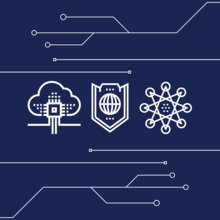
As the world transitions to sixth-generation (6G) wireless communications, two fundamental pillars shaping this new era—artificial intelligence (AI), security, and Open Radio Access Networks (Open RAN)—are central to the research agenda at the Communications Technology Laboratory (CTL) at the National Institute of Standards and Technology (NIST). With the 6G landscape promising massive connectivity, real-time intelligence, and global interconnectivity, CTL is pioneering efforts to ensure these systems are intelligent, secure, and interoperable by design.
Securing the Future with Zero Trust

In a 6G world where wireless systems will be woven into nearly every facet of society, the security stakes are exponentially higher. NIST CTL is taking a leadership role in developing zero-trust architectures that change focus from perimeter based network security to protecting all enterprise assets and subjects in addition to data and service protection. These architectures are designed for continuous verification of users, devices, and services, ensuring that trust is never assumed, always validated.
CTL is also working on cross-domain security standards that will allow devices from multiple vendors and administrative domains to interoperate securely. These standards are being engineered with both federal and commercial requirements in mind, ensuring secure integration across diverse use cases. By aligning security with scalability, CTL is fostering a future where national security and innovation can advance together.
Driving Innovation Through Open RAN
Open RAN is a cornerstone of the push toward modular, flexible, and vendor-agnostic 6G networks. The work at NIST CTL supports this transformation by enabling open interfaces and disaggregated network elements, which allows components from different suppliers to communicate seamlessly.

CTL is accelerating the standardization of disaggregated radio access network (RAN) architecture through engagements and contributions to multiple working groups of the O-RAN Alliance and Telecom Infra Project (TIP). These activities are essential for developing specifications that the industry can test and trust. CTL also publishes automation tools to ease the deployment of Open RAN testbeds to further drive innovation in small businesses and academia.
From testbed development and international standardization to cutting-edge AI and cybersecurity research, CTL is shaping the fundamentals of 6G. With AI as the enabler, security as the safeguard, and Open RAN as the catalyst for innovation, the NIST CTL 6G vision promotes a wireless future that is more intelligent, more secure, and more open than ever before.

